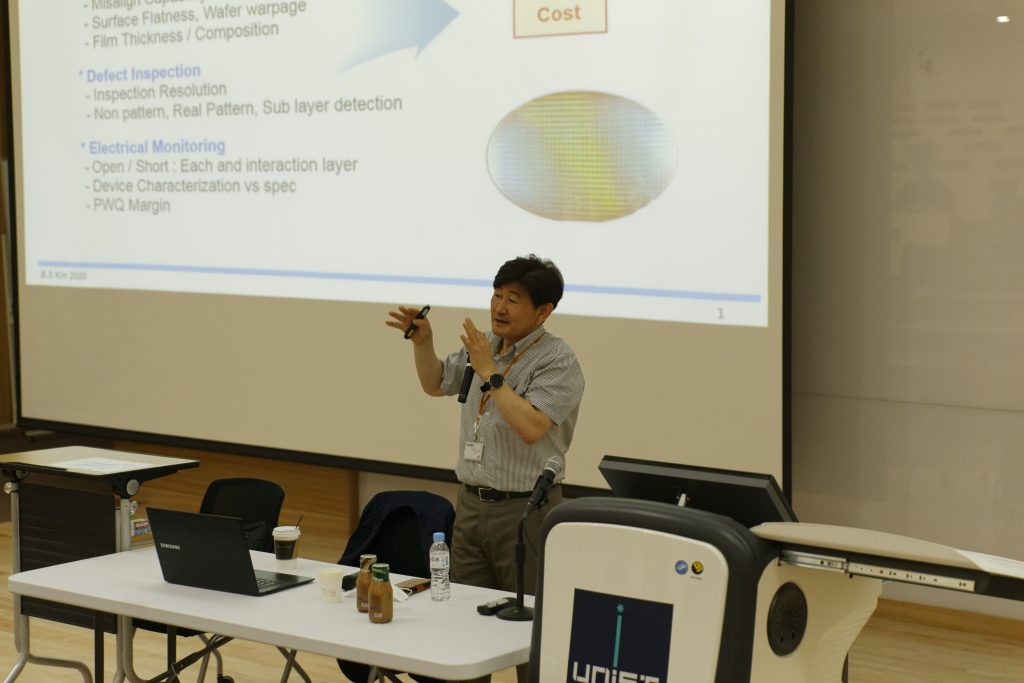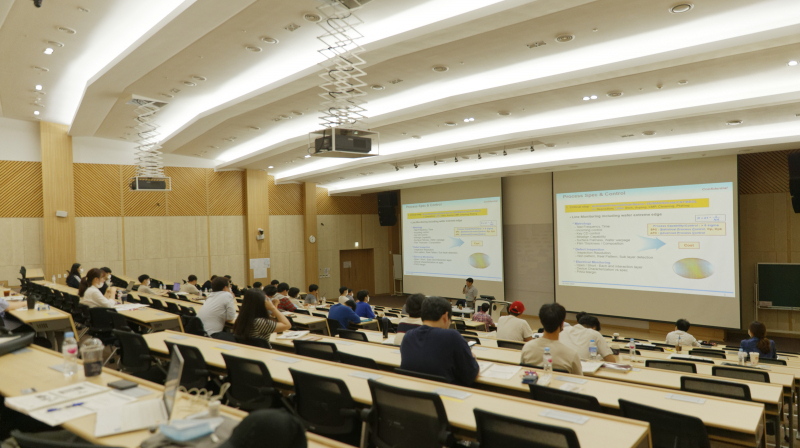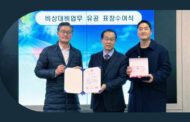A training program to strengthen research capabilities in semiconductor technology has been held at UNIST Central Research Facilities (UCRF).
Jointly organized by UCRF and PeDiSem Co., Ltd., this four-day training program, entitled ‘In-depth Training Course on Semiconductor Integration‘ took place in Natural Science Building on June 29-30, 2020 and July 7-8, 2020. It has been attended by more than 200 participants.
This program was designed to improve understanding of semiconductor integration and related technologies, such as DRAM, NAND Flash memory, emerging memories, logic circuits, as well as its working principle and manufacturing process. During the program, participants spent 8 hours per day in each field, which covers a wider range of topics, from fundamental principles to the latest technology. The entire program, including textbooks was provided free of charge for students and researchers of UNIST upon prior registration.

Professor Bongseok Kim from Hanyang University. l Image Credit: Kyoungchae Kim
The program has been taught by experts with research experience in both academic and industrial settings, which includes Professor In-Ho Nam, Professor Yun Heub Song, and Professor Bongseok Kim from Hanyang University, as well as Professor Hongsik Jeong in the Department of Materials Science and Enginecering at UNIST. They all share one thing in common: making a positive contribution for the growth of South Korea’s semiconductor industry, while working at Samsung Electronics.
“UNIST is equipped with excellent research facilities that can support the entire semiconductor process,” says Director Tae Joo Shin of UCRF.
Located on the basement floor of Natural Science Building, the UNIST Nano Fabrication Center at UCRF is a university-based nanofabrication cleanroom facility. It boasts over 50 leading-edge research facilities and outstanding research professionals. Besides, various research support is being provided to secure new technologies and for the advancement of nano processing.
Meanwhile, this program was carried out as part of the ‘Project on Building Customized Platform that Adapts Rapidly to Evolving Needs, Using Semiconductor Infrastructure’ by the Ministry of Trade, Industry and Energy (MOTIE).












